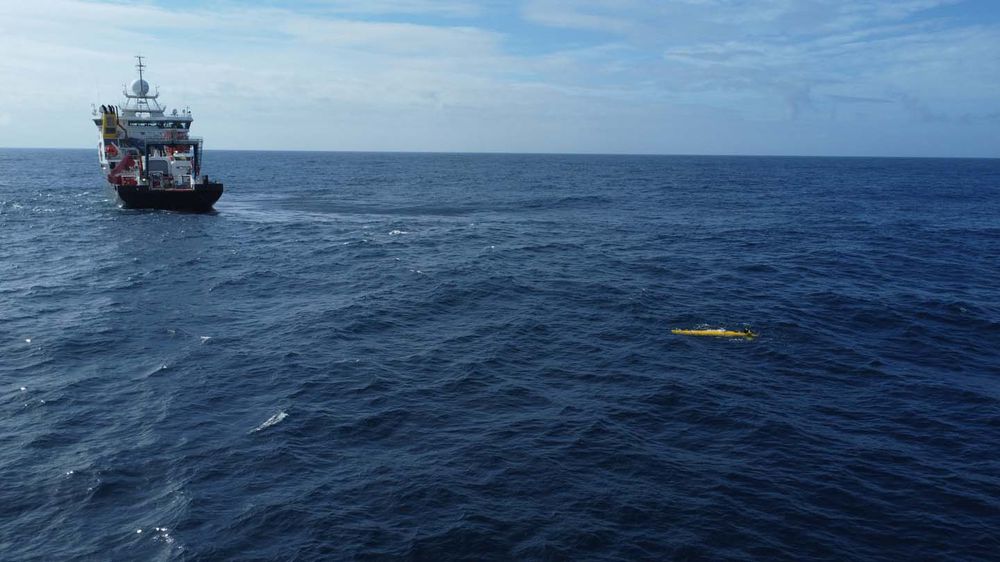Start the conversation
Contact us today to see how you could benefit from our services, technology and marine expertise

Prioritising the protection of people and the planet
NOC Innovations works alongside governments, commercial organisations and academic institutions across all areas of ocean security.
For many years, we’ve contributed to global defence missions by delivering world-class marine science and technology, enabling the evolution of that which keeps us and our offshore environments safe.

We have a long track record of advising navies and defence primes, helping to develop technology roadmaps to reflect innovations in, for instance, monitoring tools and techniques.
In several areas of research, we’ve paved the way for changes now being made by the maritime defence sector.
An important example of this is our groundbreaking work in the area of Maritime Autonomous Systems (MAS), which includes our Autosub Long Range (ALR) developments, the use of ocean gliders, and the integration of novel sensing technology.
Huw Gullick
Associate Director NOC Innovations
We also host the world’s second-largest fleet of Marine Autonomous Vehicles (MAVs) – the largest of any research organisation globally – which is built on over 20 years’ experience in developing and deploying them. And still we work to push the boundaries of MAS.
NOC Innovations has a sustained programme of developing long-endurance Autonomous Underwater Vehicles (AUVs) like ALR, which has recently led to the longest-ever continuous deployment in the Atlantic Ocean.
Our ALR recently performed two separate missions, travelling 1,013km over 21 days.
Matt Kingsland
Marine Autonomous and Robotic Systems Expert
But we can operate them outside the Atlantic too. We’re able to take our ALRs into places no other operators dare to go – for instance, beneath the Antarctic ice. In fact, we’ll soon be starting a project that aims to have an ALR occupy the seabed for a full year without human interference.
We’ve also demonstrated our Marine X-Band Radar based shallow-water depth mapping, which can be mounted on ships to provide ocean behaviour insights from several kilometres away, giving wider context to the environment surrounding a ship. For some time, it’s been possible to map shallow-water bathymetry and currents with radars from shore-based stations, and NOC have pioneered the approach from moving vessels. This presents the possibility of mapping large areas of shallow or coastal waters from a stand-off position a couple of kilometres away without vessels having to travel into potentially dangerous shallow or rocky areas.
Our capability in supporting maritime defence missions continues to evolve to meet new challenges.
Huw Gullick
Associate Director NOC Innovations
instruments and technologies in the NMEP
About cookies on this site
We use cookies to collect and analyse information on site performance and usage, to provide social media features and to enhance and customise content and advertisements.
Cookies used on the site are categorized and below you can read about each category and allow or deny some or all of them. When categories than have been previously allowed are disabled, all cookies assigned to that category will be removed from your browser. Additionally you can see a list of cookies assigned to each category and detailed information in the cookie declaration.
Necessary cookies
Some cookies are required to provide core functionality. The website won't function properly without these cookies and they are enabled by default and cannot be disabled.
Analytical cookies
Analytical cookies help us improve our website by collecting and reporting information on its usage.
Cookies used on the site are categorized and below you can read about each category and allow or deny some or all of them. When categories than have been previously allowed are disabled, all cookies assigned to that category will be removed from your browser. Additionally you can see a list of cookies assigned to each category and detailed information in the cookie declaration.
Necessary cookies
Some cookies are required to provide core functionality. The website won't function properly without these cookies and they are enabled by default and cannot be disabled.
| Name | Hostname | Vendor | Expiry |
|---|---|---|---|
| django_language | noc-innovations.com | 365 days | |
| cookiehub | .noc-innovations.com | CookieHub | 365 days |
Used by CookieHub to store information about whether visitors have given or declined the use of cookie categories used on the site. | |||
| _cfuvid | .hsforms.com | Session | |
Used by Cloudflare WAF to distinguish individual users who share the same IP address and apply rate limits | |||
| __cf_bm | .hsforms.net | Cloudflare, Inc. | 1 hour |
The __cf_bm cookie supports Cloudflare Bot Management by managing incoming traffic that matches criteria associated with bots. The cookie does not collect any personal data, and any information collected is subject to one-way encryption. | |||
| __cf_bm | .hsforms.com | Cloudflare, Inc. | 1 hour |
The __cf_bm cookie supports Cloudflare Bot Management by managing incoming traffic that matches criteria associated with bots. The cookie does not collect any personal data, and any information collected is subject to one-way encryption. | |||
| _GRECAPTCHA | www.google.com | 180 days | |
Used by Google reCaptcha for risk analysis | |||
Analytical cookies
Analytical cookies help us improve our website by collecting and reporting information on its usage.
| Name | Hostname | Vendor | Expiry |
|---|---|---|---|
| _ga_ | .noc-innovations.com | 400 days | |
Contains a unique identifier used by Google Analytics 4 to determine that two distinct hits belong to the same user across browsing sessions. | |||
| _ga | .noc-innovations.com | 400 days | |
Contains a unique identifier used by Google Analytics to determine that two distinct hits belong to the same user across browsing sessions. | |||